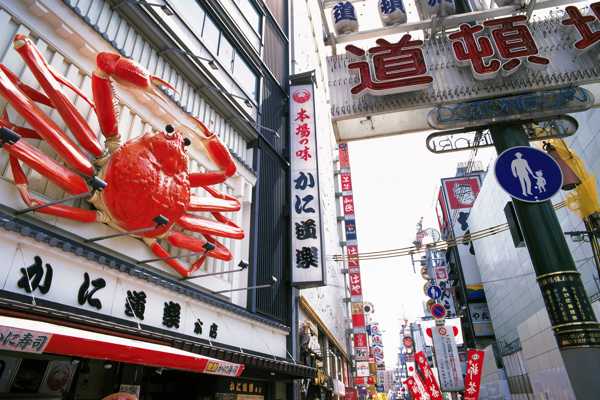In Osaka you'll find many popular temples and shrines keeping alive the history of the area, as well as relics related to the Sengoku warlords, including the Toyotomi family. In fact, Osaka has a unique history as Japan's first commercial capital, having once dominated Japan as the seat of central government, and has always been renowned as a city of merchants.
Old shopping streets and side streets that are now popular foodie areas can also be seen as remnants of what used to be temple towns and grounds. Many traditional festivals and community-based events are held at these temples and shrines, and as well as the locals, there are always visitors from all around Japan.
- 1
Shitennoji Temple
Learn about Prince Shotoku and ancient Buddhist culture
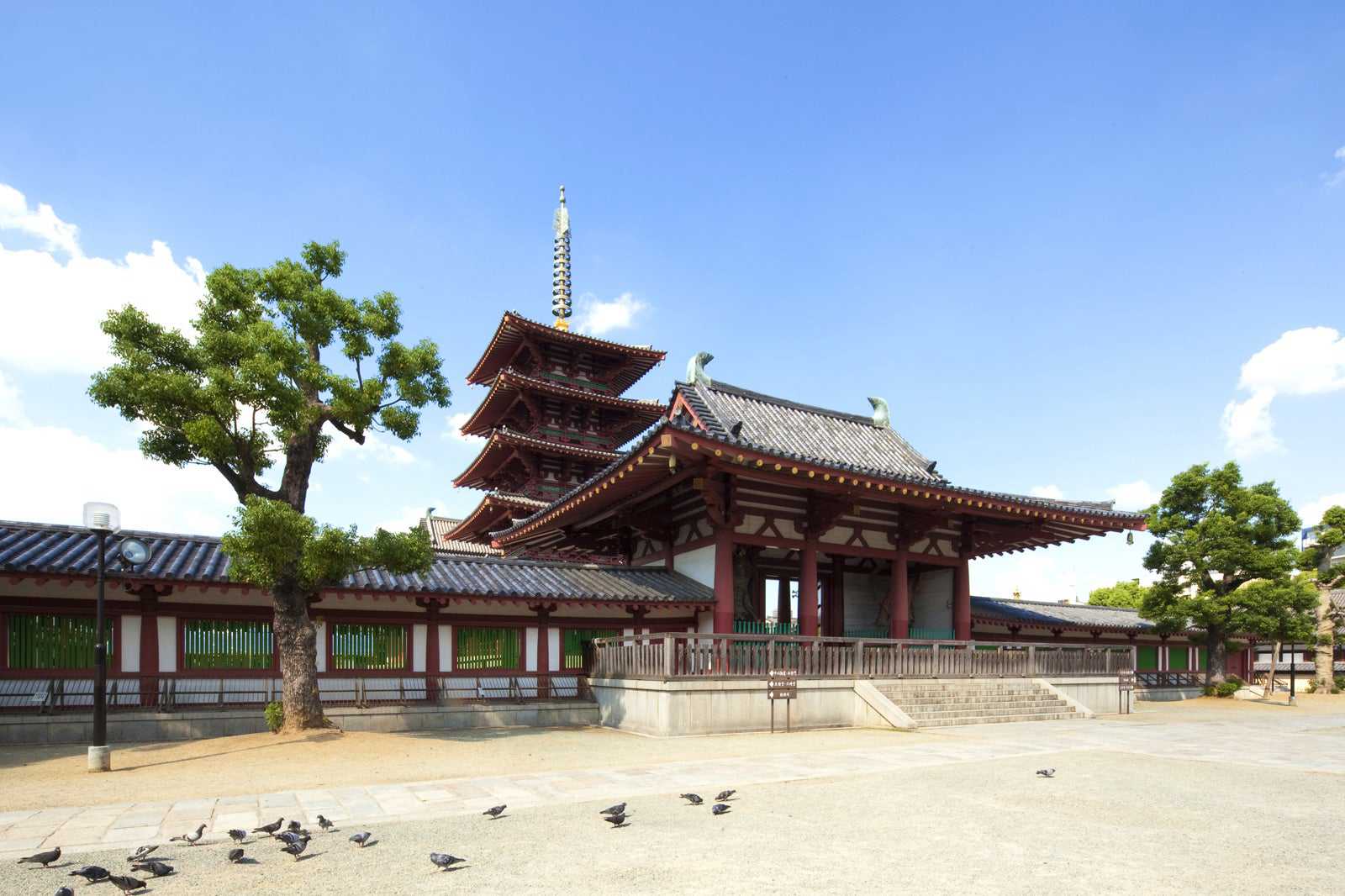
- Halpa
- Historia
- Valokuvaus
Shitennoji Temple, the oldest official temple of Buddhism in Japan, was founded by Prince Shotoku (574-627). Quiet and solemn in its vast precincts despite its location in the bustling sightseeing area of Tennoji, the temple is a spot where visitors can feel a sense of tranquillity. Architecturally, the temple has been reconstructed, but the beauty of the Asuka style is still there, as is the beauty of the architecture from the time of its founding.
In addition to the famous five-storey pagoda, other highlights include a hall depicting the life of Prince Shotoku, the garden of the Pure Land of Ultimate Bliss, and the front garden. The temple is also home to many annual events, including a fair on the 21st of each month, which is lined with stalls and is a key part of the local community.
Osoite: 1-11-18 Shitennoji, Tennoji-ku, Osaka City, Osaka Prefecture 543-0051, Japan
Avoinna: Daily from 8 am to 4 pm
Puhelin: +81 (0)6-6771-0066
Kartta - 2
Hozenji Temple
Moss-covered statues, cats and quaint side streets

- Halpa
- Historia
- Valokuvaus
Hozenji Temple is tucked away in the lively downtown area of Osaka's Minami district. The moss-covered Nishimuki Fudo Myo’o statue (a Buddhist deity) is affectionately known as Mizukake Fudo-san (literally, "water-sprinkled Fudo") and grants wishes when sprinkled with water. The bright green moss over the entire body of Fudo Myo’o adds to the charm and history of this place.
In the temple grounds you’ll always find a few cats, which are treasured for their soothing presence. The path on the north side of Hozenji Temple is Hozenji Yokocho, lined with kappo restaurants, sushi restaurants, and bars. It’s a popular nightspot connected to Sennichimae Street and is also known as the setting of the novel Meoto Zenzai ("Married Couple Zenzai").
Osoite: 1-2-16 Nanba, Chuo-ku, Osaka City, Osaka Prefecture 542-0076, Japan
Puhelin: +81 (0)6-6211-4152
Kartta - 3
Isshinji Temple
Buddha statues built from cremated remains

- Halpa
- Historia
Isshinji Temple is known for its Buddha statues, which are sculpted from the ashes of the deceased every 10 years. This is considered the best memorial service for the deceased, and over the past 130 years, the remains of approximately 2 million people have been enshrined in Buddha statues here. Ashes are widely accepted regardless of religious denomination, and many worshippers visit the temple for memorial services.
The history of the temple goes back to a hermitage associated with Honen, a prominent priest and founder of the Jodo sect of Buddhism, and it’s said that Tokugawa Ieyasu's headquarters were located here during the summer campaign of the Siege of Osaka in 1615. The tombs of Honda Tadatomo, Konishi Kaisan, Ichikawa Danjuro VIII (a Kabuki actor), and others still remain in the temple.
Osoite: 2-8-69 Osaka, Tennoji-ku, Osaka City, Osaka Prefecture 543-0062, Japan
Avoinna: Daily from 5 am to 6 pm
Puhelin: +81 (0)6-6771-0444
Kartta - 4
Namba Yasaka Shrine
Lion symbols dominate Minami, Osaka
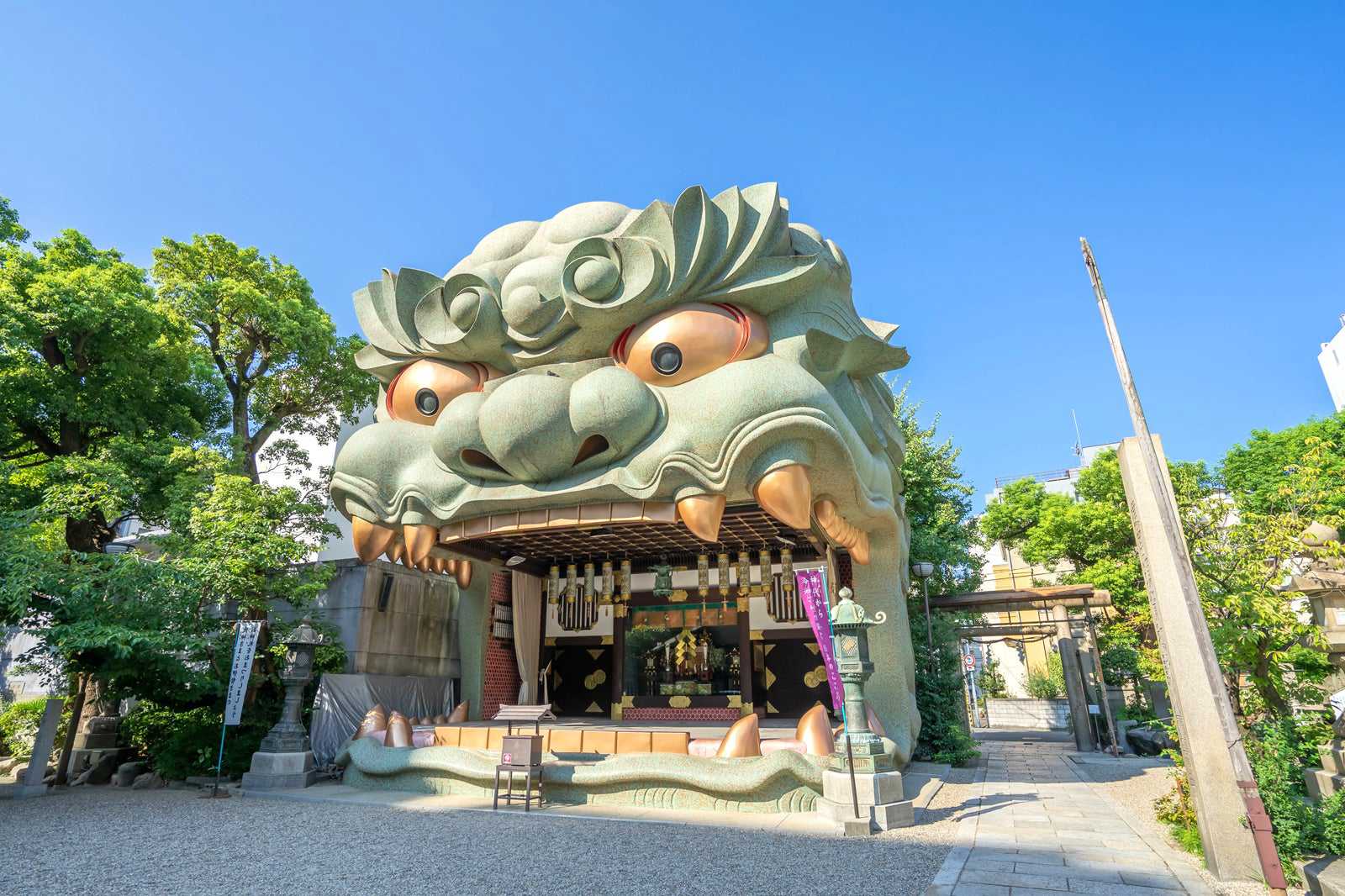
- Halpa
- Historia
- Valokuvaus
The popular Namba Yasaka Shrine is located in Osaka's Namba area. The landmark is the massive Shishiden (Lion's head pavilion). The shrine is always packed with people from Osaka and far beyond taking pictures in front of the lion's head, with its huge mouth wide open.
The history of the shrine is said to date back to the reign of Emperor Nintoku (4th to 5th century), when it was called Namba Shimonomiya (literally, "Lower Namba Shrine"). It’s also known for its summer festival, which features a tug-of-war ritual designated by Osaka City as an Intangible Folk Cultural Asset, a lion dance dedication at the Shishiden, and the Funatogyo (boat procession) along the Dotonbori moat.
Osoite: 2-9-19 Motomachi, Naniwa-ku, Osaka City, Osaka Prefecture 556-0016, Japan
Avoinna: Daily from 6.30 am to 5 pm
Puhelin: +81 (0)6-6641-1149
Kartta - 5
Sumiyoshi Taisha Shrine
A scenic ancient temple with a history of more than 1,800 years
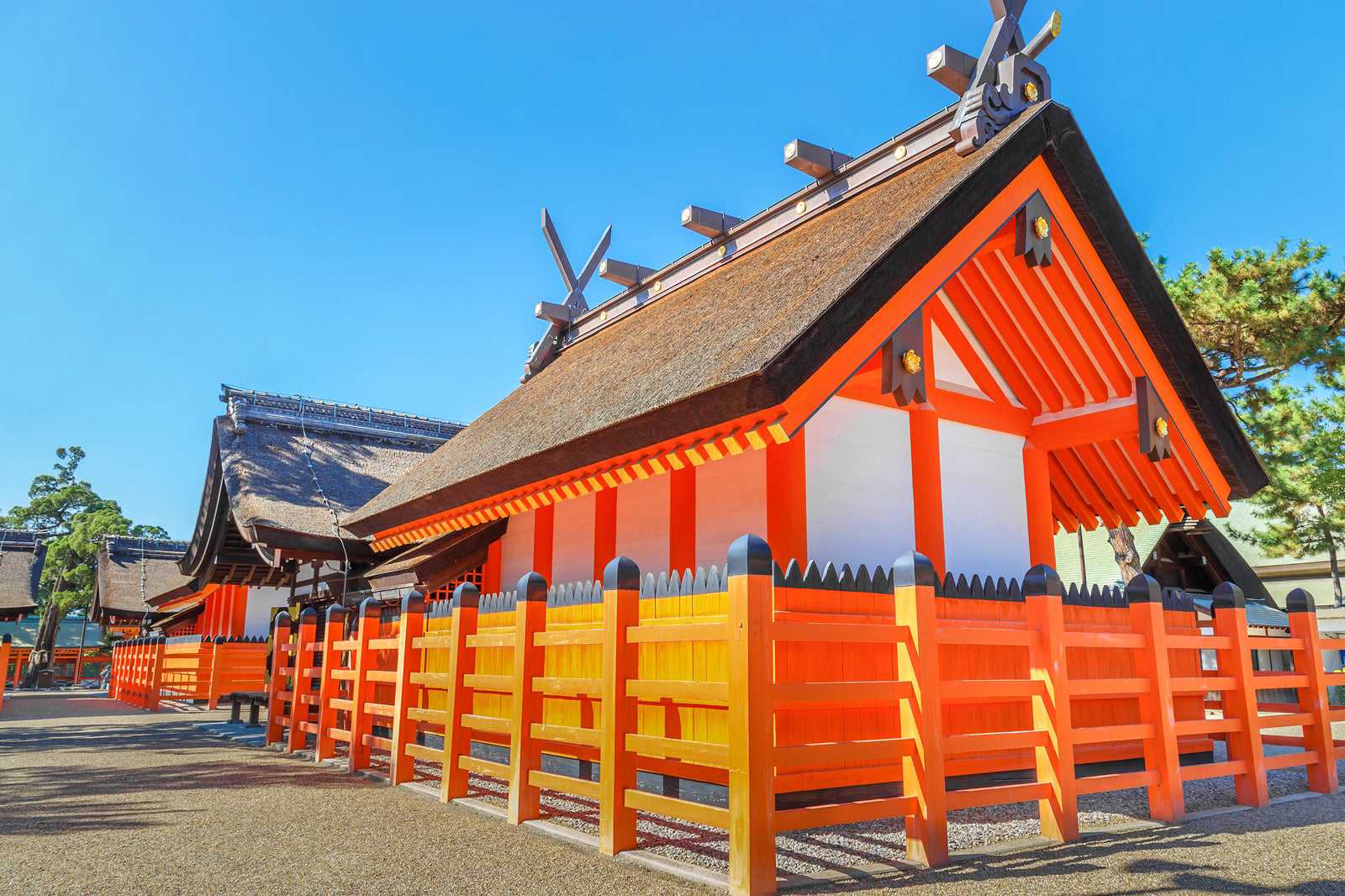
- Halpa
- Historia
- Valokuvaus
Sumiyoshi Taisha Shrine is the grand headquarters of the family of Sumiyoshi Shrines, with a history dating back to the reign of Empress Jingu Regent in 211 AD. Like Ise Jingu Shrine, the shrine undergoes annual relocation ceremonies. The main hall, based on an ancient architectural layout, is a gabled structure with a cypress bark roof and is designated as a national treasure.
The Sumiyoshi Matsuri, a traditional Shinto ritual, peaks with the procession of the Grand Mikoshi (portable shrine). Another well-known event is the Natsukoshi-no-harae (summer purification ceremony), in which Nagoshime, a group of women adorned in white powder and period costume, pass through a circle of cogon grass.
Osoite: 2-9-89 Sumiyoshi, Sumiyoshi-ku, Osaka City, Osaka Prefecture 558-0045, Japan
Avoinna: Daily from 6.30 am to 5 pm
Puhelin: +81 (0)6-6672-0753
Kartta - 6
Osaka Tenmangu Shrine
A lively area of shopping and shrines
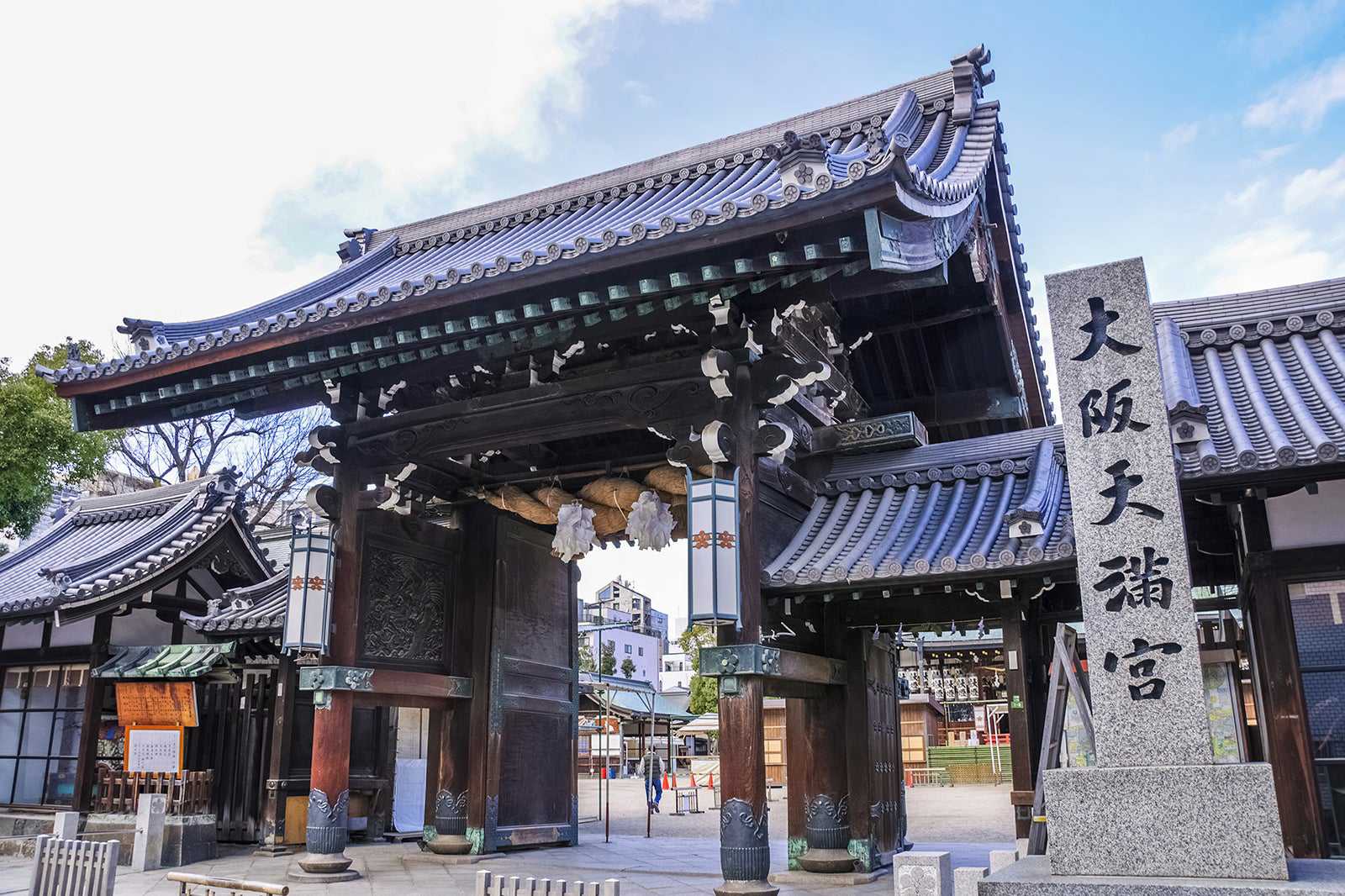
- Halpa
- Historia
- Valokuvaus
Osaka Tenmangu Shrine was founded in the late Heian period (794-1185). The shrine honours Sugawara no Michizane (a scholar, poet, and politician), nicknamed “Tenjin-san” by the locals. Famous as a place to pray for success in entrance examinations and for viewing ume (plum blossoms), the shrine attracts huge numbers of people throughout the year. Tenjin Matsuri, one of the 3 major festivals in Japan, is held in July, featuring the Rikutogyo (procession of portable shrines), the Funatogyo (boat procession) of about 100 boats, and the dedication of fireworks, which is a summertime tradition.
The surrounding area is called Tenma, and Tenjinbashisuji Shopping Street, the longest shopping street in Japan, is a particularly vibrant spot. With its many food stalls, Ura-Tenma is another popular part of the area.
Osoite: 2-1-8 Tenjinbashi, Kita-ku, Osaka City, Osaka Prefecture 530-0041, Japan
Avoinna: Daily from 9 am to 5 pm
Puhelin: +81 (0)6-6353-0025
Kartta - 7
Hokoku Shrine
A must-visit for all Japanese history buffs

- Halpa
- Historia
- Valokuvaus
Hokoku Shrine enshrines the three deities of Hideyoshi, Hidayori, and Hidenaga, the warlords of the Toyotomi household. It's situated on the Osaka Castle grounds in Morinomiya. The shrine is crowded with pilgrims who want to be blessed by Hideyoshi, the most successful tycoon in Japan, and to pray for success in their careers.
The statue of Toyotomi Hideyoshi is a must-see. The statue was once lost during the wartime due to expropriation, but it has been re-erected in its original form and is now a popular photo spot. Neighboring Tamatsukuri Inari Shrine and Shinganji Temple are also well-known to those who are interested in Japan’s Sengoku period of warring states.
Osoite: 2-1 Osaka-jo, Chuo-ku, Osaka City, Osaka Prefecture 540-0002, Japan
Avoinna: Daily from 9 am to 5 pm
Puhelin: +81 (0)6-6941-0229
Kartta - 8
Senkoji Temple
A theme park of Buddhist culture
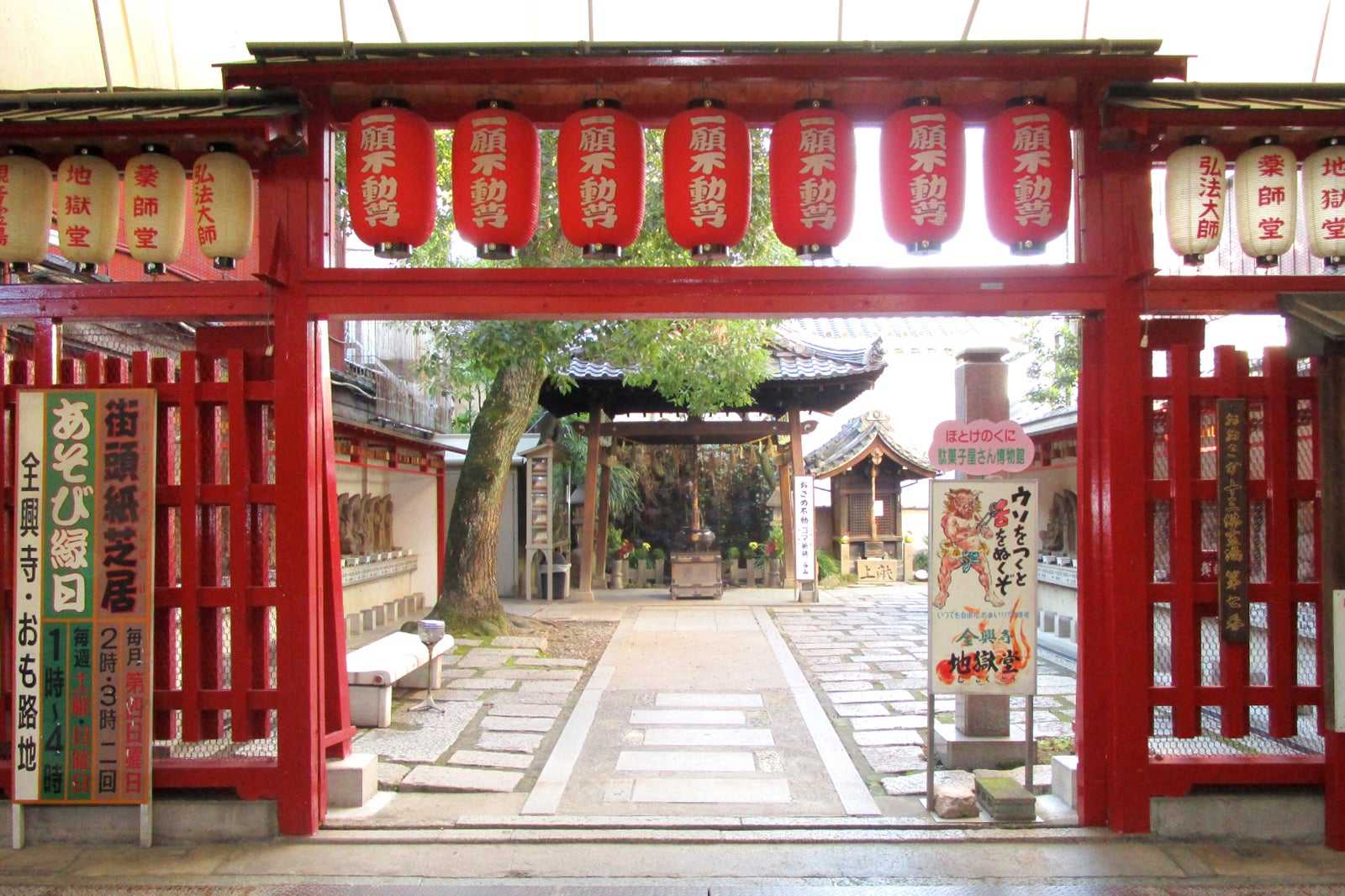
- Halpa
- Historia
- Valokuvaus
The history of Senkoji Temple is attributed to Prince Shotoku, who built the Yakushido Hall. The Yakushi Nyorai, a hidden statue of Buddha, is opened to the public twice a year. The temple is also known for its headless Jizo statue, which is said to have blown into the temple precincts after Yukimura Sanada (a samurai warrior) attempted to assassinate Ieyasu Tokugawa (a feudal lord of the Edo period) with a bomb during the summer campaign of the Siege of Osaka in 1615.
In recent years, the "hell to paradise" experience tour has become very popular. The tour includes the judgement of Emma Daio (Yama, the King of Hell), the Sanzu River (Styx), punishment by demons, a stone that sounds like the cauldron of hell, and the Sainokawara (Children's Limbo), as well as Buddhists' Pure Land after death under the protection of the Buddha. Another popular attraction is the old-fashioned children's playground.
Osoite: 4 Chome-12-21 Hirano Honmachi, Hirano Ward, Osaka, 547-0044, Japan
Avoinna: Daily from 8.30 am to 5 pm
Puhelin: +81 (0)6-6791-2680
KarttaValokuva: 聖石大戦ぶぅぶぅ (CC BY-SA 4.0) muokattu
- 9
Imamiya Ebisu Shrine
Pray to Ebessan for business success

- Halpa
- Historia
- Valokuvaus
According to legend, Imamiya Ebisu Shrine was built during the reign of Empress Suiko (6th to 7th century) as a western guardian of Shitennoji Temple, which was built by Prince Shotoku during the reign of Emperor Shotoku. The shrine is dedicated to Ebisu-gami, a deity familiarly known in the Kansai region as “Ebessan”, and the Tokaebisu festival is held around 10th January, which is Ebisu-gami's birthday.
Many well-wishers visit Tokaebisu every year to buy lucky charms called kitcho (good omens) and decorate the lucky bamboo branches. The festival is also known for the Hoegako Gyoretsu, a traditional procession in which celebrities take part. The Children's Ebisu Festival is a popular summer festival of fun and laughter.
Osoite: 1-6-10 Kita-ku, Osaka City, Osaka Prefecture 556-0003, Japan
Avoinna: Daily from 9 am to 5 pm
Puhelin: +81 (0)6-6643-0150
Kartta - 10
Ohatsu Tenjin
Visit the stage of the love story between Ohatsu and Tokubei
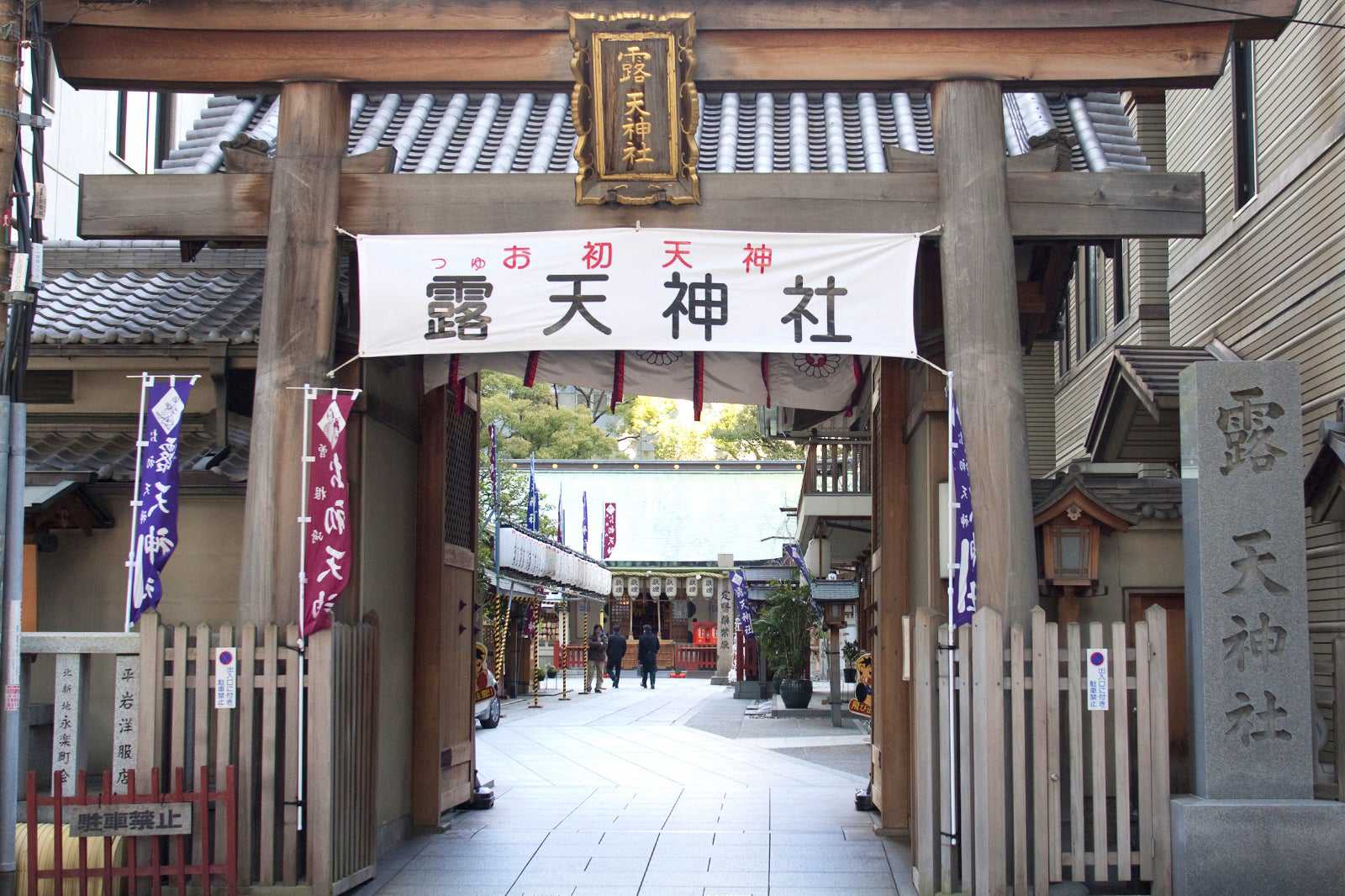
- Halpa
- Historia
- Valokuvaus
Ohatsu Tenjin, officially referred to as Tsuyuten Jinja Shrine, is famed for the ningyo joruri play "Sonezakishinju”. Since this play was written by Monzaemon Chikamatsu based on a love suicide incident that took place on the shrine grounds, the shrine became commonly known as Ohatsu Tenjin in honour of the heroine, Ohatsu.
It’s now popular among young people as a spiritual spot that, it’s claimed, can deliver fulfilment in love. Flea markets, Setsubun festivals, and annual festivals also take place within the grounds. Also make sure you visit the Ohatsu Tenjin-dori shopping street, which dates back to just after the end of World War II.
Osoite: 2-5-4 Sonezaki, Kita-ku, Osaka City, Osaka Prefecture 530-0057, Japan
Avoinna: Daily from 9 am to 11 pm
Puhelin: +81 (0)6-6311-0895
Kartta















